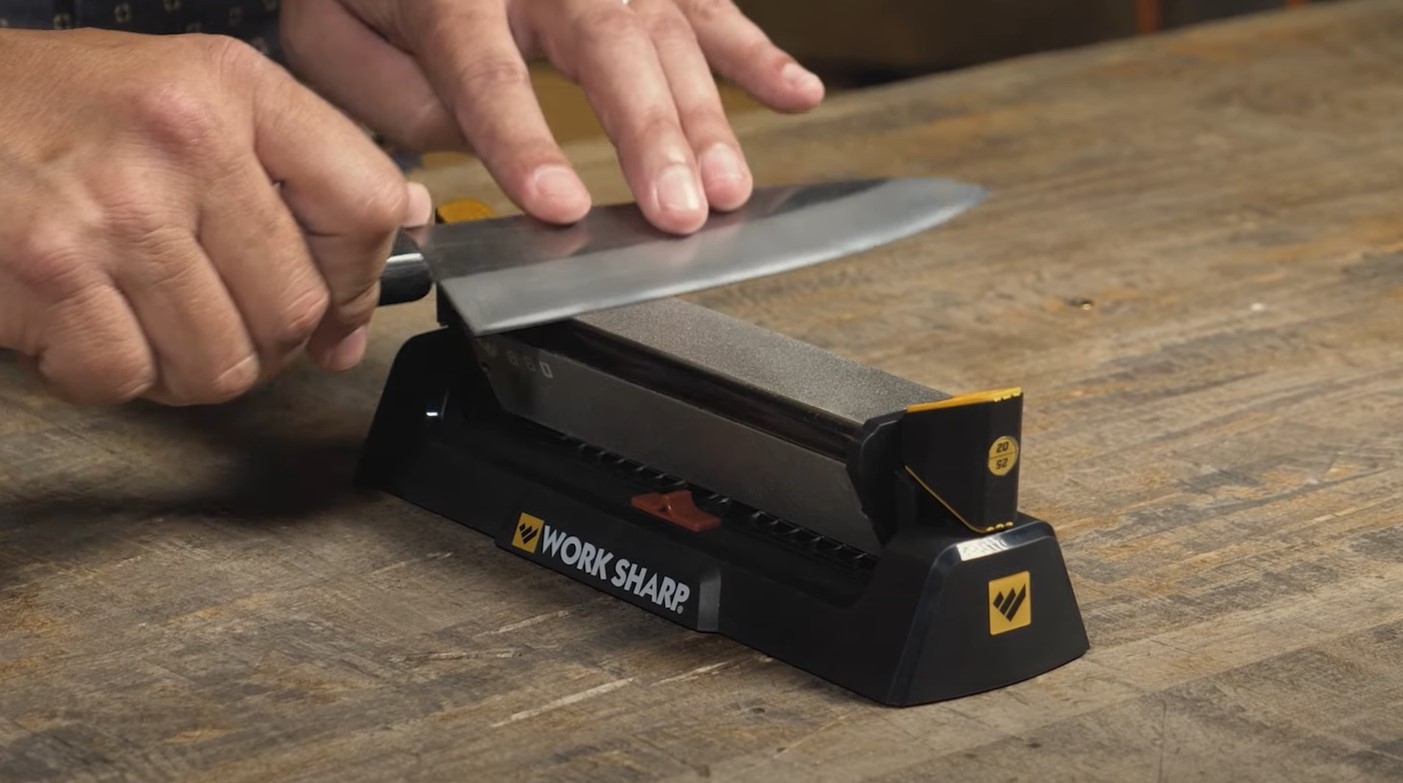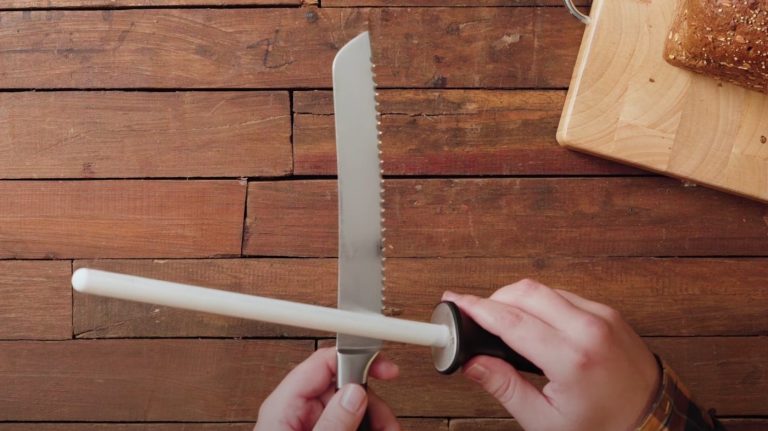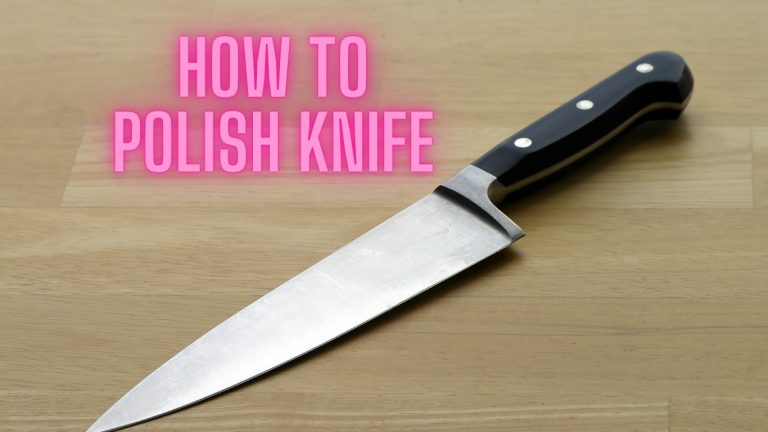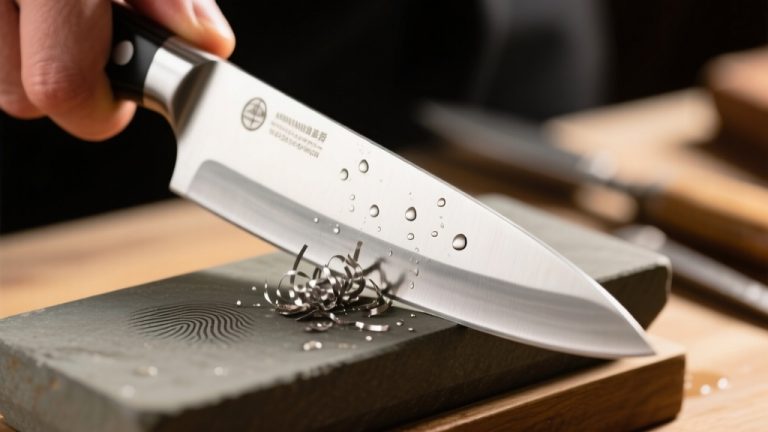What Is a Burr on a Knife: Sharpening Secrets
A burr on a knife is a tiny strip of metal that forms at the cutting edge during sharpening. It shows you’ve reached the edge’s apex but can hinder sharpness.
Typically created on the opposite side of your sharpening stroke, a burr can be detected by lightly running your finger along the blade.
Removing this burr is essential for peak performance, and various techniques exist to achieve a clean edge. Explore further techniques for effective burr removal.
Key Takeaways
- A burr is a small strip of metal that forms along a knife’s cutting edge during the sharpening process.
- It indicates effective sharpening but hinders maximum sharpness until removed.
- Burrs typically develop on the side opposite the sharpening stroke and can be detected by touch or visual inspection.
- They provide a temporary edge, but can compromise overall knife performance and durability.
- Removing the burr through techniques like stropping improves edge retention and ensures optimal knife performance.
Definition and Purpose of a Burr
A burr, often referred to as a fine wire edge, is a small strip of metal that forms along the cutting edge of a knife during the sharpening process. Its presence indicates that you’ve effectively reached the edge or apex of the blade.
However, while a burr signifies progress, it also hinders the knife from achieving maximum sharpness until it’s removed. This signals it’s time to switch sides during sharpening.
You can detect a burr by running your finger along the knife’s side, feeling for a catch. Under magnification, it appears as a raised edge or small fold of metal, and its distinct texture sets it apart from the rest of the blade, underscoring its role in effective sharpening.
How a Burr Forms During Sharpening
After understanding what a burr is and its role in the sharpening process, it’s important to look at how it actually forms. A burr develops through the removal of metal particles, accumulating at the edge tip, typically on the side opposite the sharpening stroke.
As you repeatedly abrade the bevel face, metal bends, indicating that you’ve reached the edge apex. Burrs commonly form during the initial sharpening stages with coarse stones. When using lower angles for sharpening, the burr can become more pronounced and easier to detect.
- Material removal occurs at the edge tip.
- Coarse stones or diamond plates initiate the process.
- A consistent angle is essential for effective burr formation.
- Pressure should be adjusted throughout sharpening.
- A burr must be symmetrical on both sides for peak edge performance.
Techniques for Detecting a Burr
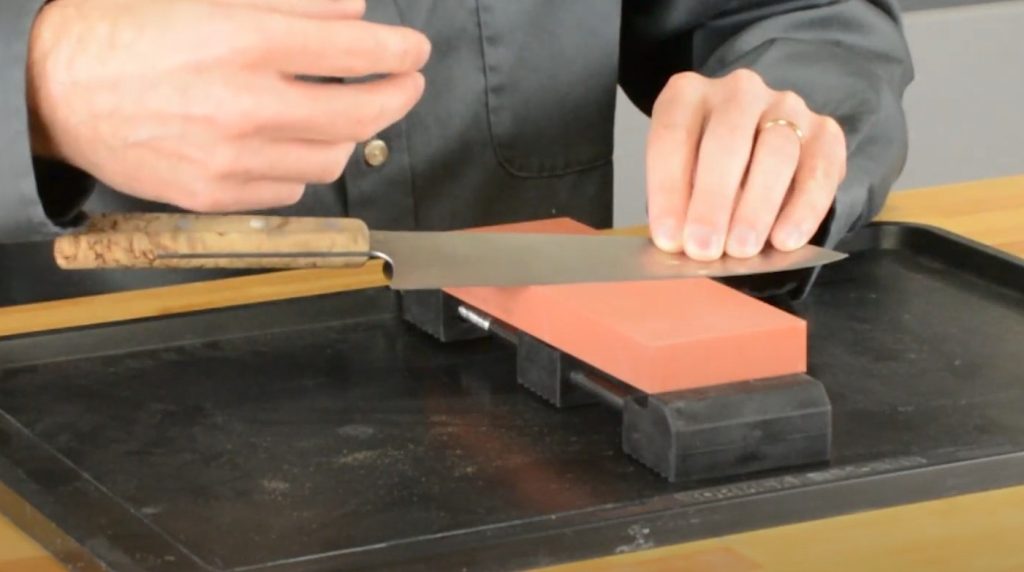
How can you effectively detect a burr on your knife edge? Start with the finger method, sliding your finger pads perpendicular to the blade; this works well on coarse grits.
For finer grits, use a microfiber cloth if it catches while you swipe, a burr is present. Burr detection can also be enhanced by using your thumb nail with a lateral and trailing motion for subtle burrs.
Visual inspections through tools like jeweler’s loupes can help identify burrs, especially on high-grit edges.
Employ a flashlight to illuminate the blade’s edge, revealing any burrs.
If your fingers aren’t sensitive enough, cotton swabs or your fingernails can be effective alternatives.
The Impact of a Burr on Knife Sharpness
While burrs can initially give the impression of sharpness, their presence greatly impacts a knife’s overall performance. A burr may create a temporary edge, but it compromises durability and efficiency.
Here are some key effects of a burr on knife sharpness:
- Initial Sharpness: The burr can make the knife seem sharp at first. However, dull knives increase the risk of slips and accidents, highlighting the importance of maintaining a properly sharpened knife.
- Edge Stability: Burrs can fold or break under pressure, leading to dullness. Additionally, burrs can vary in form and size, affecting blade performance dramatically.
- Cutting Efficiency: While it may enhance cutting initially, durability is compromised. A sharp knife reduces prep time significantly, making it essential to remove burrs for optimal performance.
- Edge Retention: Knives with burrs dull faster than those without.
- Optimal Performance: Removing the burr enhances overall sharpness and longevity. Understanding these factors can guide your sharpening and maintenance practices for better knife performance.
Effective Methods for Removing a Burr
To effectively remove a burr from your knife, you can utilize several techniques that guarantee a clean edge without creating additional burrs.
One method is to use a sharpening stone, applying light pressure on the opposite side to avoid forming another burr. This process is crucial because removing a burr ensures a smooth edge on the knife, and maintaining proper sharpening angles is essential to achieving the best results.
Alternatively, a leather strop works wonders for removing microscopic burrs; simply swipe the knife across both sides.
You can also drag the knife edge across wood or use a stack of newspapers for a budget-friendly option.
Always inspect your knife edge frequently to verify complete burr removal.
Frequently Asked Questions
Can a Burr Be Beneficial for Certain Cutting Tasks?
Yes, a burr can be beneficial for certain cutting tasks.
When you create a “toothy” edge, the burr enhances cutting ability, particularly for materials like zip ties or tough fabrics. It provides a stronger edge that can outperform burr-free blades in specific applications.
However, it’s crucial to match your sharpening technique to the task at hand to maximize the benefits of the burr while ensuring peak performance and cutting efficiency.
How Often Should I Check for a Burr on My Knife?
You should check for a burr on your knife immediately after sharpening and before each use.
Regularly inspecting for burrs guarantees ideal sharpness and performance. Incorporate this into your routine maintenance, as checking frequently allows you to identify areas needing improvement.
As you gain experience, you’ll develop a feel for detecting burrs through tactile and visual methods, enhancing your sharpening skills and knife longevity.
Prioritize this practice to maintain cutting efficiency.
Is a Burr More Common on Specific Knife Types?
Yes, a burr is more common on specific knife types, particularly those made of steel, like carbon steel knives.
Their malleability allows for easier burr formation during sharpening. In contrast, ceramic knives, while they can form burrs, present challenges due to their rigidity.
You’ll notice that the type of metal greatly influences not just burr formation but also the sharpening techniques you should use to achieve peak performance.
Can I Prevent Burr Formation While Sharpening?
You can prevent burr formation while sharpening by using finer stones and maintaining lighter pressure.
Focus on edge-leading strokes, which promote burr breaking rather than formation. Alternating strokes can help, but keep the pressure light to minimize burr size.
Consistent sharpening angles are essential, as they aid in controlling the burr.
What Materials Are Best for Stropping to Remove a Burr?
For effective stropping to remove a burr, you’ll want to use materials like leather strops, which are excellent for polishing and can withstand repeated use.
If leather isn’t available, newspaper stacks or cork boards are cost-effective alternatives. Denim also works well for polishing.
Remember to apply light pressure and use edge trailing strokes to avoid causing additional burrs.
Selecting the right material based on your knife’s needs is essential for best results.
Sharpen Smart: Perfecting Your Blade with Burr Control
In the world of knife sharpening, a burr represents the subtle balance between raw potential and refined performance.
Just as a sculptor chisels away excess stone to reveal beauty, you must remove the burr to release your knife’s true sharpness. Embracing this process not only enhances your blade but also reflects the journey of honing your skills.
By understanding and managing the burr, you sharpen not just your knife, but also your craftsmanship and attention to detail.

